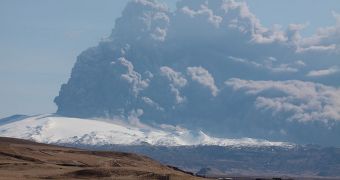In 2010, ash clouds coming from Iceland managed to make themselves responsible for flight bans on the European Continent, for the second time. Despite the fact that experts established that this event's impact was relatively small for volcanic eruptions, it caused chaos and influenced the profit margins of airline companies across western and northern Europe in a negative way for six days, last year in April.
Experts who analyzed this rare phenomena came up with a theory which shows that the event shouldn't have taken us by surprise, since it is part of a cycle.
Graeme Swindles from the University of Leeds in UK proved that such ash clouds travel to Europe almost every 56 years.
This idea will probably be used to forecast the next event which will have an impact upon airline companies, but it does not provide exact data. Therefore, researchers can only approximate the time of the next volcanic eruption.
The phenomenon interfered with the activity of airline enterprises from approximately 20 countries which have closed their airspace, a situation which has affected the flight plans of millions of people.
After stopping their activity, the flights managed to keep 344,109 tonnes of CO2 emissions out of the atmosphere every day. On the other side, experts estimated that 150,000 tonnes of CO2 have been emitted by the volcano on a daily basis.
Scientists can't estimate the strength of the future phenomenon, but they fear that it will have a considerable impact, taking into consideration that the last eruption, which took place in 2010, managed in only a few weeks to produce an amount of ash comparable to the one emitted in 1783, over a period of 8 months.
The impact was even more devastating, if we think of the fact that the atmosphere was significantly affected by the amount of 120 million tons of sulphur dioxide which have influenced the air quality. Such an event takes place on our planet once in a thousand years.

 14 DAY TRIAL //
14 DAY TRIAL //